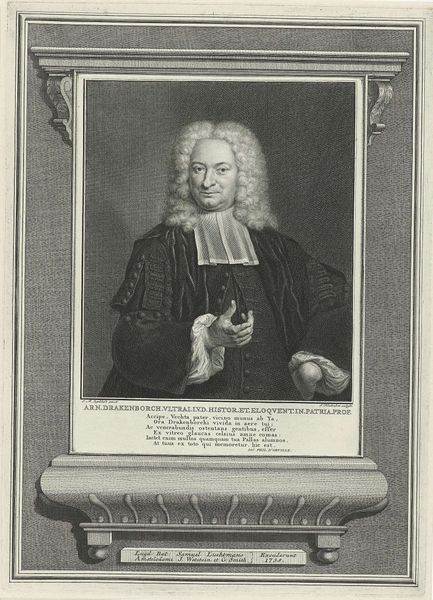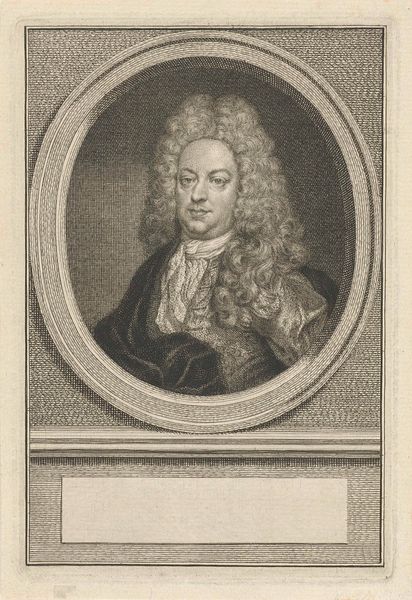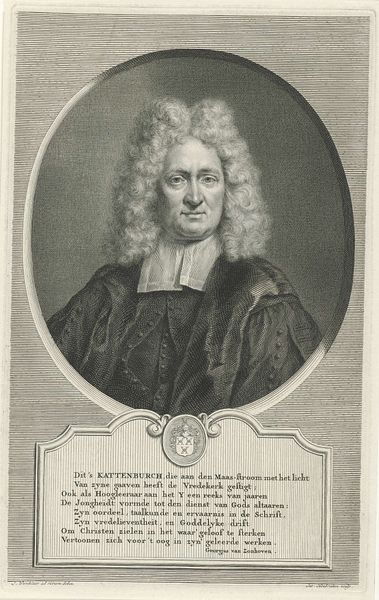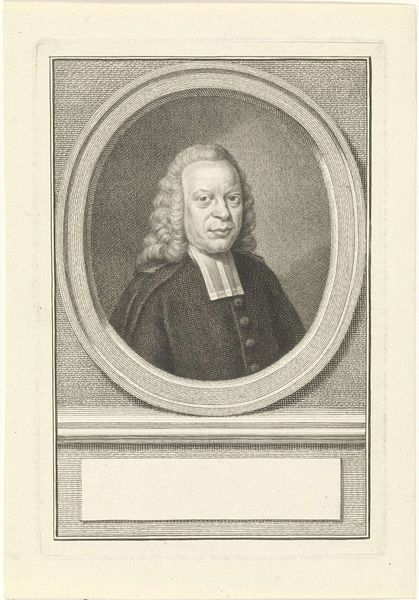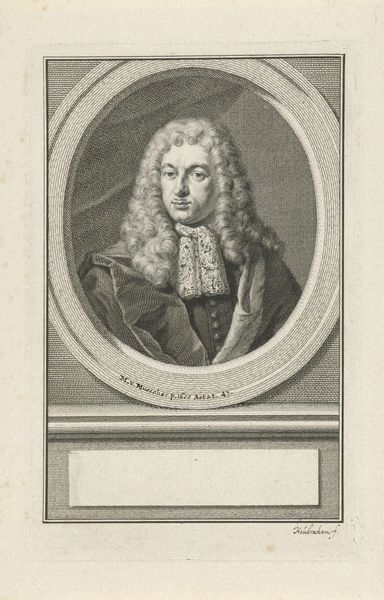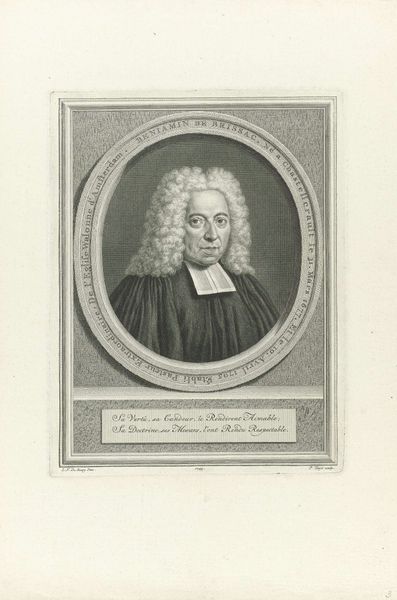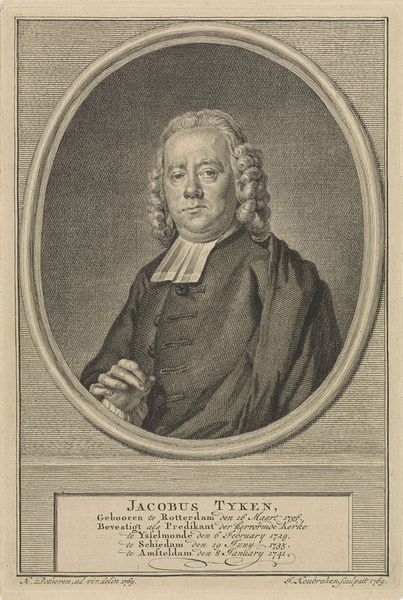
print, engraving
#
portrait
#
baroque
# print
#
old engraving style
#
historical photography
#
engraving
Dimensions: height 266 mm, width 184 mm
Copyright: Rijks Museum: Open Domain
Curator: Let’s take a closer look at "Portret van Pieter Burman," an engraving created in 1759 by Jacob Houbraken, housed right here at the Rijksmuseum. It depicts a figure framed in an oval portrait, rendered in monochrome print. Editor: Instantly, I see authority and maybe a bit of vanity! The way he holds his hand out… Is he about to bestow a blessing or correct my Latin? The ornate wig and frilly cuffs certainly broadcast a certain status. It makes me think of power, knowledge, and perhaps a dash of performative intellectualism. Curator: Exactly. Burman was a highly respected professor. The portrait captures him as a figure of established academic importance. Houbraken's technique – the meticulous engraving – reinforces the values of precision and control so important during the Baroque era. The density of detail, the tiny lines and dots creating shadows and textures, were intended to communicate seriousness and learning. Editor: It also suggests a rigid social structure. All those signifiers—the wig, the clothing, even the inscription below—they all contribute to this sense of hierarchy. And yet, there’s something also touchingly human in his face. It's like he knows the world is putting on a show, but he is also completely into the production. It makes you wonder who he was when no one was watching him. Curator: Indeed. And even the printmaking medium carries symbolic weight. Prints, unlike paintings, allow for the wide distribution of images. It immortalized Burman but made his image public at the same time, accessible to a broader audience. That duality says something about reputation versus the more intangible quality of influence. Editor: This makes me question how the dissemination of this image in that way altered his influence. Did it give him a godlike, all-seeing essence or one with less weight because the piece itself became mass-produced and maybe commodified? That thought sits with me for sure! I can almost smell the paper and ink just thinking about its distribution. Curator: Seeing all these connections renews my perspective as well! From symbolic portrait to tangible representation, Houbraken created more than just an image, he created an archetype that has something to tell each viewer. Editor: Absolutely. Next time I'm faking it at a dinner party, I'm channeling my inner Burman! What an evocative dive into the past!
Comments
No comments
Be the first to comment and join the conversation on the ultimate creative platform.


